Transylvanian Principality: a vassal state of the Turks?
Transylvania used to be an integral part of the Kingdom of Hungary from the arrival of the Magyar tribes in the 9th century A.D. until the birth of the Transylvanian Principality in the 1570s. Unlike some misconceptions, the Kingdom of Hungary didn’t cease to exist after the Battle of Mohács in 1526, and after the Habsburg attack in 1527, Transylvania didn’t become a mere vassal state of the Ottoman Empire.
Let us not forget, that we are talking about a sizeable land in Central Europe: the area of the Principality was almost twice larger than the size of modern-day Hungary. Even the present area of Székely-land, the home of the Hungarian Székelys is larger than modern Kosovo. Since 1918, Transylvania and some sections of the Partium have been governed by Romania, except for five years between 1940 and 1945 when the northern part had been part of Hungary again.
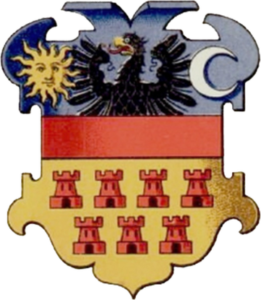
In the 16th century, Transylvania had a special status that was born as a temporary solution, and later it was changed according to the actual power of the two empires, the Ottoman and the Habsburg. Geographically speaking, Transylvania was stuck between them, but luckily far away from them. The legal position of Transylvania was an action of volunteer acquiescence rather than an outcome of a conquest of the Turks.
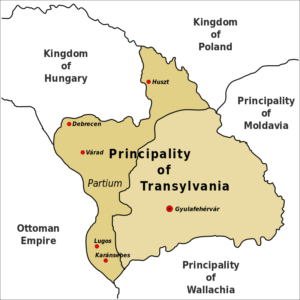
A thought before Balla Péter’s lecture: Before the defeat of Mohács in 1526, some of the Hungarian lords tried to make King Lajos (Louis) of Hungary understand that the Turks needed Vienna and not Hungary. Also, Sultan Suleiman would have agreed to get a safe corridor to the desired “Golden Apple” of Vienna. In case of opening a passage to the Turks, King Louis could have kept his crown and inner autonomy without the destruction of his lands. He could have kept his army, and laws in exchange for some lip service, and annual taxes paid to the Sultan. A LOT better terms and conditions could have been given to him compared to Moldavia and Wallachia.
Even stronger conditions than later Principality of Transylvania obtained. He would have needed to pay a smaller annual tax than King Habsburg Ferdinand paid to Suleiman a decade later. Who persuaded Louis to dump the peace talks and jump headlong into certain death? It was his Queen, Habsburg Maria, Ferdinand’s sister. Her dynastic interests had to be defended and the noblemen around the Queen could persuade King Louis to “fight as a good Christian would”.

Szapolyai János used to be the Voivode of Transylvania under the reign of King Lajos. After Mohács, he was in charge of an intact Transylvanian army, and soon he was crowned King of Hungary. After the Habsburg attack in 1527, King Szapolyai was not supported by any Christian monarchs. With a help of his genius diplomat, the Polish Hieronym Łaski, Szapolyai was able to prevent the Ottomans’ general attack on Hungary. Having settled a treaty, Suleiman “allowed” him to be the king of East Hungary because the Sultan focused on Vienna and had not had enough troops to overrun East Hungary just yet.

All in all, the lands of East Hungary served as a basis for the Transylvanian Principality which was not a vassal, for a vassal can be described like this:
1. a vassal state does not have an independent foreign policy;
2. pays taxes regularly;
3. in war, supports his overlord with troops, and cannot elect its rulers
We will see to what extent Transylvania has fulfilled these requirements and find out whether Transylvania was a fully sovereign state between 1540-1699/1711 or not, according to the lecture of a Hungarian historian, Balla Péter. (Please, note that I use the Eastern name order for Hungarians where family names come first.)

Hungarian historians in the 20th century liked to describe Transylvania as a sovereign state, a natural continuance of the Hungarian constitutional structure, as Várkonyi Ágnes concluded. However, recently there are other researchers like Fodor Pál and Pálffy Géza who call Transylvania rather a simple vassal of the Sultan with slightly bigger rights than the two Wallachian satellite states. Was the truth somewhere between? Let me give you a summary of Balla Péter’s lecture which says that the truth is indeed in between.

After Szapolyai died in 1540, Habsburg Ferdinand immediately attacked Hungary resulting in the Ottomans’ taking of Buda in 1541. Then, Transylvania got out of the way of Suleiman because the Turks wanted to take Vienna. Yet, the Sultan tried hard to get the Eastern part of the old Hungarian Kingdom as well. After their attacks got stuck in Royal Hungary at the castles of the western Military Borderland, the Peace of Drinápoly (Edirne) of 1568 preserved the actual borders. This peace could be achieved as Suleiman had died in 1566 and his successor, Sultan Selim targeted the Mediterranean Sea. At the same time, Emperor Habsburg Charles V didn’t care much about liberating Hungary or occupying Transylvania because his attention was fixed on the same Mediterranean direction.

However, the Ottomans did their best to use Transylvania to have influence over the Habsburgs between 1570-1699. King Szapolyai’s son, János Zsigmond was an elected king of Hungary but he has never been crowned. A year before his death, in 1571 he resigned his right as a Hungarian king in Speyer, and thus he was appointed as the first Prince of Transylvania by the Sultan. Just like Suleiman, Sultan Selim “allowed” him to be the king of East Hungary because he had not enough troops to get his lands at that time.

Falsely, many Western historians label Transylvania as a mere vassal of the Sultan and as a result, call the Hungarians the „enemy of Christendom”.
Even in the more obvious cases in the two Wallachian states, history is more complex than that. Transylvania was equally far from Vienna and Istanbul and its location was more fortunate than the two Wallachian states. The Wallachian states were closer to the Turks and consequently, enjoyed many times lower privileges. Also, there were times when they were supervised by the Transylvanian Principality.

The prince of Transylvania made a contract with the Sublime Porte which was called an „athame” and it was a superior contract to a pherman: for example, Aron, the Voivode of Moldova was appointed by the Pasha of Silistia who sent him just a pherman. We can better understand Transylvania’s position if we compare it to the two Wallachian states, Moldova and Wallachia, which were more strictly supervised and their rulers had to pay the taxes in person to the Sultan on a fixed date each year. In case they failed to do so, a punishing campaign was launched immediately. It was not so in Transylvania; the tax was smaller and sometimes not paid at all and never by the prince in person. We can talk about a punishing campaign for not paying taxes.

Prince Báthory István (1533-1586), the later Polish king, had even the power to bargain with the Sultan. The Sultan sent him an athame first in 1572 and the Sultan requested him to pay the taxes at a fixed time in person. Báthory refused it and the Sultan`s request was taken out from the next athame in 1575. Now, Báthory didn’t like another statement in it which said he would be submitted under the Sultan just like the other vassals were. The Sultan finally had to send him the third athame without this statement in the same year.
This document already addressed Transylvania as an “empire” and it looked like rather a contract between a Muslim and a Christian ruler, although indicating the superiority of the Sultan. This diplomatic success could enable Báthory to get involved in the Polish king’s election. He was able to persuade the Polish noblemen to elect him as their king with Turkish help: the Ottoman diplomats also told the Polish Estates plainly that this would be the only way to avoid a Polish-Ottoman war. In this case, we can also see that Transylvania had a lot bigger room to shape its foreign policy – to a certain extent, of course.

Here it is time to disperse a stubborn concept among the historians who thought Báthory István (Stephen) wanted to unite Royal Hungary and Transylvania with Poland to drive the Turks out of the area. No, he didn’t want it. We know a letter of his in which he answered to a Hungarian nobleman who had asked him the very question. Báthory replied to him saying straightly that he could imagine such a unification of Hungary only with the help of the Sultan.

We also have to understand that most of the Transylvanian elite by this time had embraced the Protestant faith and would not have welcomed a unison with Royal Hungary which was ruled by Catholic kings who did not tolerate their faith. I have written a dramatized historical short novel about how Báthory István seized the throne of Transylvania, you can read it here:
https://www.hungarianottomanwars.com/transylvania/gyulafehervar/

There are some romantic concepts about the Transylvanian princes but first of all, they were realistic politicians who tried to balance between the “two heathens”, the Habsburgs and the Ottomans. Yet, I dare say that they have contributed to the survival of the Hungarian culture, and state system just as much as the Hungarians of Royal Hungary, even if they were fighting against each other many times. It is interesting enough, but the partition of Hungary had contributed to its survival: the noblemen in Royal Hungary could at any time blackmail the Habsburg rulers by threatening Vienna with siding with the Transylvanians when they thought their constitutional privileges were in peril. This way, the Habsburgs were forced to keep the Hungarian constitution and Hungary has never become a mere Habsburg province.

As for sending troops to his overlord, the Sultan, two things must be mentioned: from the age of King Szapolyai to the reign of Prince Apafi, the Transylvanians have found millions of excuses for not giving troops to the Sultan against the Hungarians or the Habsburgs. It was more often, though, that the Transylvania princes borrowed Turkish units as auxiliary forces.
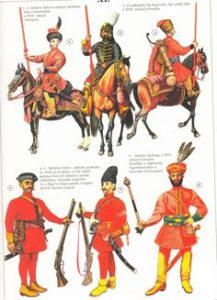
At the same time, most of the Hungarian noblemen of Royal Hungary quite willingly opened the gates of their castles and towns when the armies of the Transylvanians appeared there. When Prince Bocskai, Prince Bethlen, or Prince Rákóczi attacked the Habsburgs, we can see how easily they took the Hungarian lands. After the age of the Dual Kingship, Hungarians tried to avoid fighting each other whenever they could. For example, we know of a battle during the 30-Year-War where Zrínyi György’s unit was facing a Hungarian unit from Transylvania and we know the Hussars didn’t hurt each other; they rode past each other without a sound.

Also, Transylvania could even allow itself the freedom of not getting involved in the Ottoman-Austrian 15-Year-War on its overlord`s side. Yet, we see that the Transylvanian commander Bornemissza János (son of the valiant Bornemissza Gergely of Eger) was leading the Transylvanian forces in the Battle of Tura in 1594 against the Turks. Moreover, Prince Báthory Zsigmond had joined the Christian coalition against his overlord, the Sultan; it is true, that he hurried back to Transylvania after the allied Christian forces were defeated in the Battle of Mezőkeresztes, in 1596; but there was no punishing campaign launched against him after this.

The Ottomans provided military power both to Prince Bocskai István (whose statue can be seen in Geneva, next to Luther`s) and to Prince Bethlen Gábor who made Transylvania rich and great. Bethlen had a role in 1617 to stop a Polish-Turkish war; it was the year when he refused the offer of the Swedes who wanted to offer him the Polish crown. He also refused the Hungarian crown from the Sultan`s hand (just like Bocskai did). He was rather playing with the idea of the unification of Transylvania, Wallachia, and Moldavia, thus establishing the „Kingdom of Dacia”. We have to remark that Bethlen was not fighting „directly” against the Hungarian Kingdom during the 30-Year-War but mostly against the Catholic coalition.
Yet, Bethlen and Bocskai are dividing figures, many people either love or hate them.

When Prince Rákóczi I György won the throne in 1630, we could see that he had been bargaining with the Sultan about the amount of the taxes for 5-6 years before paying a single coin to the Sublime Porte. It would have been unheard of and punished by a campaign immediately in the case of the two Wallachian states.

When the Turks wanted to launch a war against the Polish in 1633 (as it happened in almost every decade), the Sultan ordered Rákóczi to come with his troops to Moldova and join them. Rákóczi was procrastinating and it was finally he who negotiated with the Polish King Vladislav IV, telling him the Turks` plans and thus could block the war in 1634. Also, the Prince defeated the army of the Pasha of Buda in 1636 – an act of war, which was not punished either by the Sultan. One would think a real vassal would not have been allowed to scatter his overlord`s troops.

When Rákóczi joined the 30-Year War, the Sultan was supporting him, more than his Swedish allies. Yet, the Sultan ordered him in 1645 to withdraw to Transylvania because of the influence of the German lobby in Istanbul. Rákóczi obeyed and didn`t move against Vienna: it was not his real intention to contribute to the fall of the Holy Roman Empire in earnest. He just wanted to take full advantage of his balancing politics between the two great powers and indeed, the Emperor granted the Rákóczi family his acceptance as the princes of Transylvania for eternity in 1647.
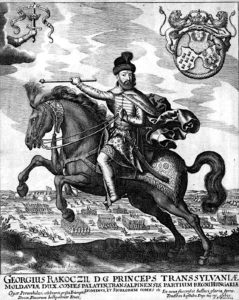
Sadly, his son, Prince Rákóczi II György overestimated his possibility and thought Transylvania was as strong as to get involved in war for the Polish throne in 1657. It led to the decline of the „Fairy Garden” as Transylvania was called at that time because the Turks, after several warnings, punished him and the Principality severely. Várad Castle (Oradea), the gate of Transylvania fell in 1660 to the Turks after a heroic siege. Shamefully, the Habsburg Emperor didn`t allow his forces to help the castle although his general was very close to the city with a large Imperial army.
Prince Apafi and his son, the next rulers of Transylvania, had to pay more taxes to the Sublime Porte in spite of the fact that Transylvania’s area has become smaller due to the loss of Várad castle. Yet, Apafi didn`t give troops to the Sultan in 1683 when he was attacking Vienna. Finally, it was the Diploma Leopoldium in 1690 which finished the independence of Transylvania, attaching it to the Habsburgs: yet, the last Prince of Transylvania was Rákóczi Ferenc II who left the country in 1711.

All in all, Balla Péter concluded in his lecture that Transylvania was a country that had ties to both the Ottoman Empire and to the Habsburg-led Kingdom of Hungary, it was not sovereign but it had its autonomy, it was not a vassal state but it submitted itself to the Turks in a contract.
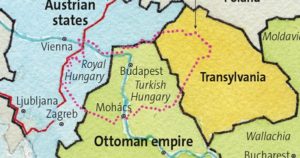
You can read more about the Hungarian Székely people of Transylvania here:
https://www.hungarianottomanwars.com/essays/who-were-the-szekelys/
Dear Readers, I can only make this content available through small donations or by selling my books or T-shirts.
If you like my writings, please feel free to support me with a coffee here:
You can check out my books on Amazon or Draft2Digital, they are available in hardcover, paperback, or ebook:
https://www.amazon.com/dp/198020490X
or at https://books2read.com/b/boYd81


My work can also be followed and supported on Patreon:


